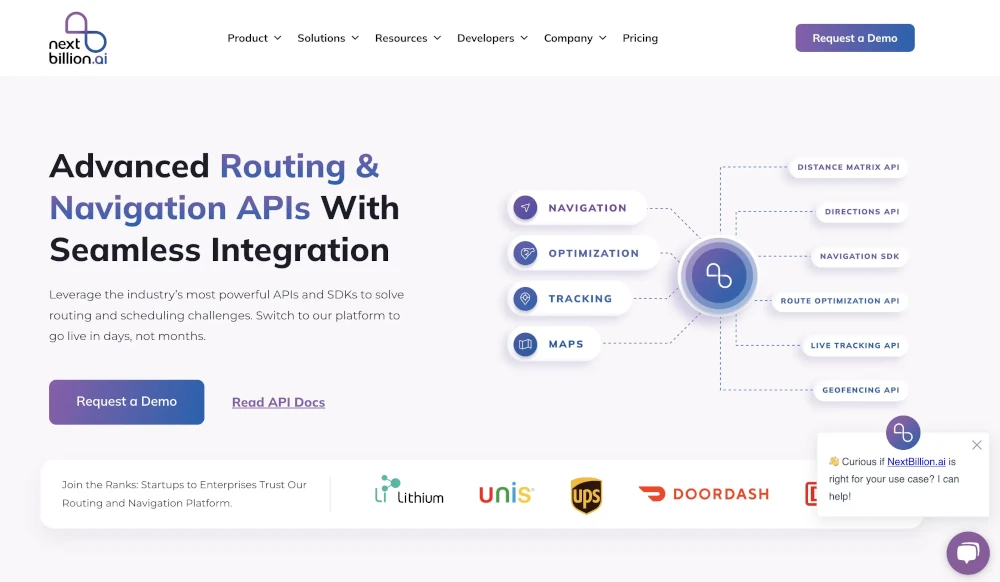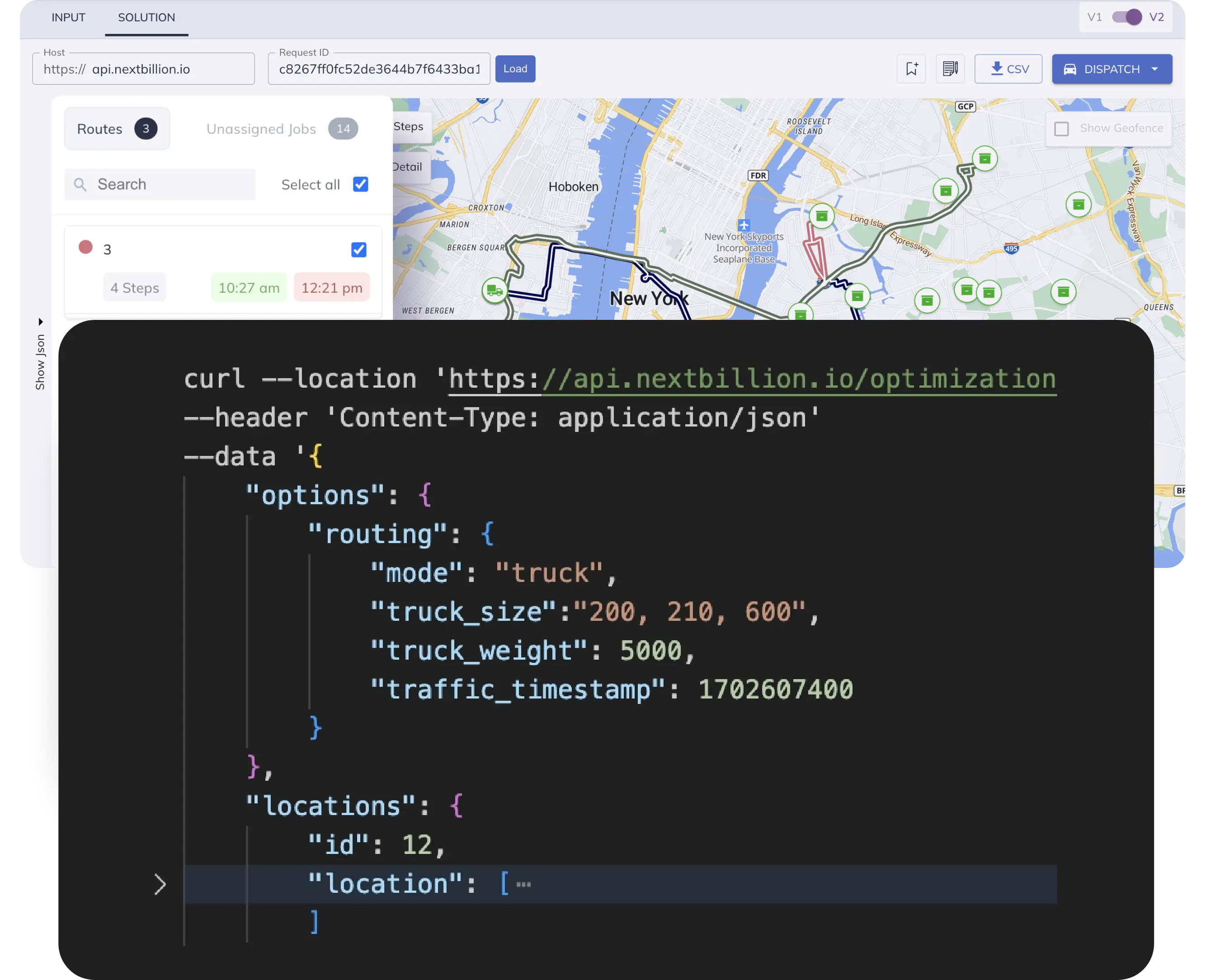Table of Contents
For any business relying on transportation, knowing the precise location of your vehicles at any given moment is invaluable. Vehicle tracking systems have evolved from expensive, complex installations to accessible, user-friendly tools that provide real-time insights.
Today, even small businesses can leverage this technology to improve efficiency, cut costs and enhance customer satisfaction.
Let’s explore the fundamentals of vehicle tracking systems and why they are becoming indispensable for modern businesses.
What Is a Vehicle Tracking System?
A Vehicle Tracking System (VTS) is a technology solution designed to monitor and manage the location and status of vehicles in a fleet. Utilizing GPS and other tracking technologies, a VTS captures real-time data on vehicle positions, speed and routes. This information is transmitted via cellular or satellite networks to a central server, which can be accessed through a user interface.
Businesses can use this data to optimize routes, ensure timely deliveries and maintain overall fleet efficiency. Beyond basic location tracking, advanced systems also provide insights into driver behavior, vehicle health and operational patterns, making them a comprehensive tool for fleet management.
The Growing Importance of Vehicle Tracking Systems for Businesses
The adoption of vehicle tracking systems is rapidly increasing across various industries. Businesses are realizing the numerous advantages these systems offer, from operational efficiency to enhanced security.
Here are the key benefits of tracking vehicles:
Dynamic Route Adjustment for Last-Minute Changes
One of the most significant advantages of vehicle tracking systems is the ability to adjust routes in real time. Businesses can quickly accommodate last-minute orders or cancellations by rerouting the nearest available vehicle. This flexibility ensures that customer demands are met promptly, enhancing customer satisfaction and operational efficiency.
Accurate ETAs
Providing accurate Estimated Time of Arrivals (ETAs) is crucial for customer satisfaction. With real-time tracking, businesses can offer precise ETAs based on the current location and speed of their vehicles. This transparency helps manage customer expectations and reduces the frustration associated with delayed deliveries. Accurate ETAs also improve the reliability and credibility of the service provider.
Accurate Capacity Planning for Fleet Management
Vehicle tracking systems provide valuable data that helps businesses forecast their capacity accurately. By analyzing historical data and current fleet status, companies can predict demand patterns and optimize their resources accordingly. This capability ensures that businesses can meet peak demands without overextending their resources, leading to better planning and resource allocation.
Cost Management
Effective cost management is a critical benefit of vehicle tracking systems. By optimizing routes, businesses can significantly reduce fuel consumption and vehicle wear and tear. Efficient route planning minimizes unnecessary mileage, leading to lower fuel costs and reduced maintenance expenses. Additionally, tracking systems help identify and eliminate inefficiencies in fleet operations, contributing to overall cost savings.
Safety Improvements
Vehicle tracking systems play a vital role in enhancing the safety of drivers and vehicles. By monitoring driving behavior, such as speeding or harsh braking, businesses can enforce safer driving practices. Real-time alerts for unsafe driving can be issued to drivers, encouraging them to adhere to safety protocols. Moreover, tracking systems can provide immediate assistance in case of emergencies, ensuring quick response times and improving overall safety.
Asset Utilization
Maximizing the utilization of each vehicle in the fleet is essential for operational efficiency. Vehicle tracking systems help ensure that all vehicles are used effectively, reducing downtime and idle time. By analyzing usage patterns, businesses can make informed decisions about fleet expansion or downsizing, optimizing their assets to match operational needs.
Theft Prevention and Recovery
Theft prevention and asset recovery are significant concerns for businesses with valuable mobile assets. Vehicle tracking systems provide an additional layer of security by enabling real-time monitoring of vehicle locations. In the event of theft, tracking systems can quickly locate and recover stolen vehicles, minimizing losses. Geofencing features can also alert managers if a vehicle leaves a designated area, providing immediate notifications of potential theft.
Enhanced Customer Service
Real-time tracking and accurate ETAs contribute to improved customer service. Customers appreciate the ability to track their deliveries in real-time and receive updates about their order status. This transparency builds trust and loyalty, leading to repeat business and positive word-of-mouth referrals. Enhanced customer service is a direct result of the efficiency and reliability provided by vehicle tracking systems.
Environmental Benefits
By optimizing routes and reducing unnecessary mileage, vehicle tracking systems contribute to lower fuel consumption and reduced carbon emissions. Businesses can implement eco-friendly practices by minimizing their environmental impact through efficient fleet management. This not only benefits the environment but also aligns with corporate social responsibility goals and enhances the company’s reputation.
How Businesses Use NextBillion.ai to Track Their Vehicles
NextBillion.ai offers robust solutions for vehicle tracking through its Live Tracking API, Asset Tracking SDKs and Live Tracking UI Tool. These products provide comprehensive tracking capabilities that can be customized to meet the specific needs of your business.
The Live Tracking API allows seamless integration of tracking functionalities into your existing systems, while the Asset Tracking SDK enables developers to incorporate location tracking directly into their Android, iOS and Flutter applications.
The Live Tracking UI Tool provides an intuitive interface for managing and monitoring your assets in real time.
Let’s look at the various ways companies can utilize our Live Tracking UI Tool to enhance their operations.
Navigate and Manage Assets Seamlessly with the User-Friendly Live Tracking UI
One of the standout features of NextBillion.ai is its intuitive Live Tracking User Interface (UI). This UI is designed to make asset management straightforward and efficient, even for users who are not technically inclined.
- Simple Navigation: The Live Tracking UI is built with a user-friendly design that allows for easy navigation. Users can quickly access different sections of the interface, find the information they need and perform actions without getting lost in complex menus or settings. The clear layout and intuitive controls ensure that managing assets is a seamless experience.
- Comprehensive Dashboard: The dashboard provides a comprehensive overview of all assets, displaying key information such as location, status, and recent activity. This centralized view helps fleet managers make informed decisions at a glance without needing to dig through multiple screens.
- Interactive Map: The interactive map feature allows users to see the real-time locations of their assets on a detailed map. Users can zoom in to view specific areas or zoom out to get an overview of the entire fleet. This visual representation of asset locations aids in better spatial understanding and management.
Leverage Real-Time Monitoring of Asset
Real-time monitoring is crucial for efficient fleet management, and NextBillion.ai excels in providing accurate, up-to-date information about all tracked assets.
- Live Location Updates: The Live Tracking UI continuously updates the location of each asset, ensuring that fleet managers have the most current information. This feature is essential for dynamic environments where vehicle positions change frequently.
- Status Indicators: Assets are marked with status indicators that show their current state, such as moving, idling or stopped. These indicators help managers quickly assess the situation and make necessary adjustments.
- Historical Data Access: In addition to real-time monitoring, users can access historical data to review past movements and activities of their assets. This capability is useful for analyzing trends, optimizing routes, and identifying any irregularities in asset usage.
Easily Configure Alerts and Monitors within the UI
Setting up alerts and monitors is an integral part of proactive asset management. NextBillion.ai’s Live Tracking UI makes this process simple and efficient.
- Customizable Alerts: Users can configure alerts based on various parameters such as location, speed or status changes. For example, an alert can be set to notify the manager if a vehicle exceeds a certain speed limit or enters a restricted area. These alerts help in maintaining control over the fleet and ensuring compliance with operational standards.
- Real-Time Notifications: Once configured, alerts are delivered in real-time through the UI, email or SMS. This immediate notification system ensures that fleet managers can respond promptly to any issues or changes in asset status.
- Monitor Creation: Users can create monitors to track specific assets or groups of assets continuously. Monitors can be tailored to focus on particular routes, zones, or types of activity, providing targeted oversight where it’s needed most.
- Geofencing: The UI allows for the easy setup of geofences – virtual boundaries around specific geographic areas. When an asset enters or exits a geofenced area, the system triggers an alert. This feature is particularly useful for monitoring compliance with designated routes and ensuring that assets remain within approved areas.
By leveraging these features, businesses can maintain a high level of operational control and responsiveness, ensuring that their fleets are managed effectively and efficiently.
Practical Application: Fleet Management in Action
Imagine a logistics company that needs to manage a fleet of delivery vehicles. By using NextBillion.ai’s Live Tracking API and UI, the company can:
- Monitor Deliveries: Real-time tracking of each delivery vehicle ensures that dispatchers know the exact location and status of every delivery. If a vehicle is delayed due to traffic, the dispatcher can quickly reroute it to minimize the impact on delivery schedules.
- Enhance Security: Alerts and monitors can be set up to detect unauthorized movements or deviations from planned routes, helping to prevent theft and ensure compliance with delivery protocols.
- Improve Efficiency: Historical data analysis allows the company to identify bottlenecks and optimize routes for future deliveries, reducing fuel costs and improving delivery times.
NextBillion.ai’s user-friendly Live Tracking UI and advanced monitoring capabilities provide businesses with an advanced vehicle tracking system they need to manage their fleets effectively.
Whether it’s navigating and managing assets, leveraging real-time monitoring, or configuring alerts and monitors, NextBillion.ai offers comprehensive solutions that enhance operational efficiency and security.
The Different Types of Vehicle Tracking Systems
When choosing a vehicle tracking system for your business, it’s essential to understand the different types available:
Satellite GPS Tracking
Satellite GPS tracking offers global coverage and high accuracy. It is ideal for businesses that operate in remote or international locations where cellular coverage may be limited.
Cellular-Based Tracking
Cellular-based tracking uses mobile networks to transmit data. It is effective in urban areas with good network coverage. This type of tracking is typically more cost-effective than satellite tracking.
Radio Frequency Identification (RFID)
RFID systems are suitable for short-range tracking and access control. They are often used in environments where precise location tracking is not required but where monitoring entry and exit points is crucial.
Telematics Systems
Telematics combines GPS tracking with vehicle diagnostics. These systems can monitor various vehicle parameters, such as fuel consumption, engine performance, and driver behavior. Telematics systems provide a comprehensive view of fleet operations, making them suitable for large fleets with complex requirements.
Beyond Vehicle Tracking With NextBillion.ai
NextBillion.ai’s tracking products offer comprehensive fleet management solutions. Our advanced technology ensures that businesses can track their vehicles in real time, optimize routes and improve overall operational efficiency.
But NextBillion.ai does more than just tracking. Our end-to-end routing, optimization and navigation stack enhances every aspect of fleet management.
Our suite of tools includes real-time traffic data for accurate ETAs, offline navigation for reliable guidance and the ability to seamlessly integrate last-minute stops without disrupting existing routes.
We consider real-life variables like truck-safe routes, over 50 optimization constraints and custom travel costs. Our mapping capabilities include rendering maps, generating turn-by-turn directions, marking critical no-go zones and adapting routes dynamically.
Don’t settle for basic tracking. Experience the power of NextBillion.ai. Book a free demo call and see how we can transform your fleet operations!
Ready to get started?
Request a DemoTable of Contents







